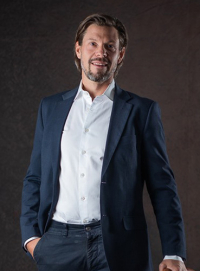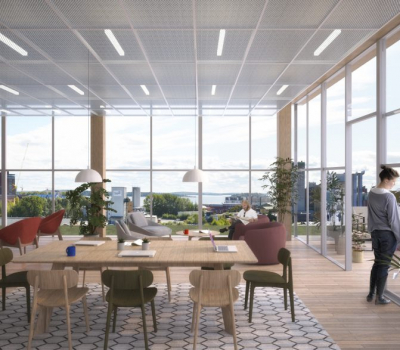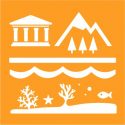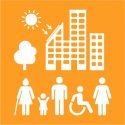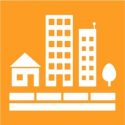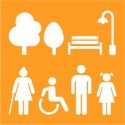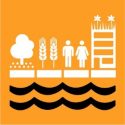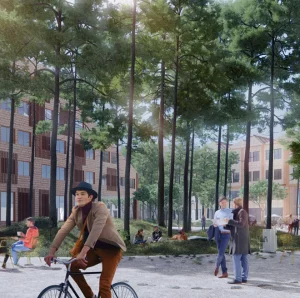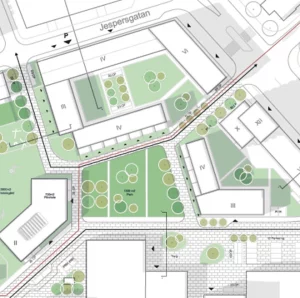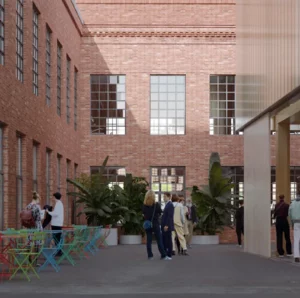In Kopparlunden in central Västerås, Nyfosa is developing the properties Verkstaden 6 and Verkstaden 8. The two properties were built at the end of the 19th century and carry great historical and cultural values. Kopparlunden is planned to transform into a denser, vibrant and attractive city district where new buildings, streets, parks and pleasant courtyards will be integrated in a respectful way. The focus of the project is to create a new housing district and develop while preserving the area’s existing cultural values.
Content
Background
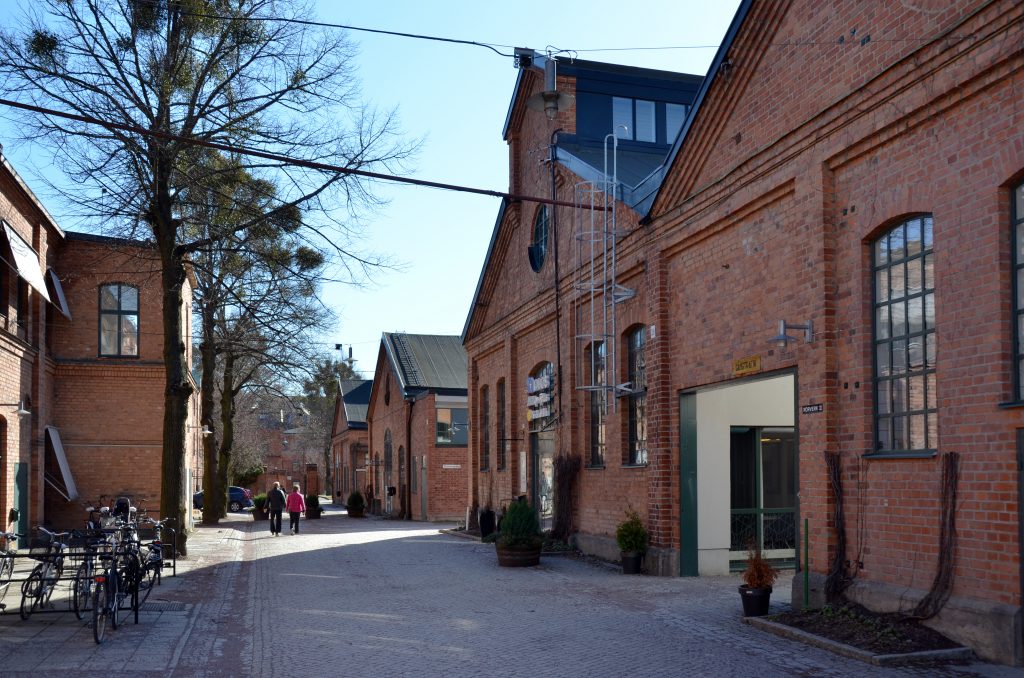
Kopparlunden originated during the industrialization of the late 19th century. At that time the Allmänna Svenska Elektriska Aktiebolaget (General Electric Company (ASEA)) and the Nordic Metallaktiebolaget (Nordic Metal Company) established themselves in the area. The expansion of the industry was rapidly gaining momentum and during the first decades of the 20th century a large number of buildings were erected. As early as 1899, construction started on the Emaus Workshop (Verkstaden 7) in southern Kopparlunden in which ASEA manufactured generators. The workshop was rebuilt several times and eventually its current shape of four parallel parts. During that same period, the Arvid Workshop (Verkstaden 8) was also erected, which came to form the southern boundary of Kopparlunden. The building was built in 1935-1936 based on drawings by Västerås city architect Erik Hahr. Arvid Workshop has undergone a number of renovations over the years. Today, the area contains mixed businesses with an emphasis on offices, small businesses and culture. Kopparlunden has been of national interest for valuable cultural environment since 2018 U24 Västerås.
Proposal
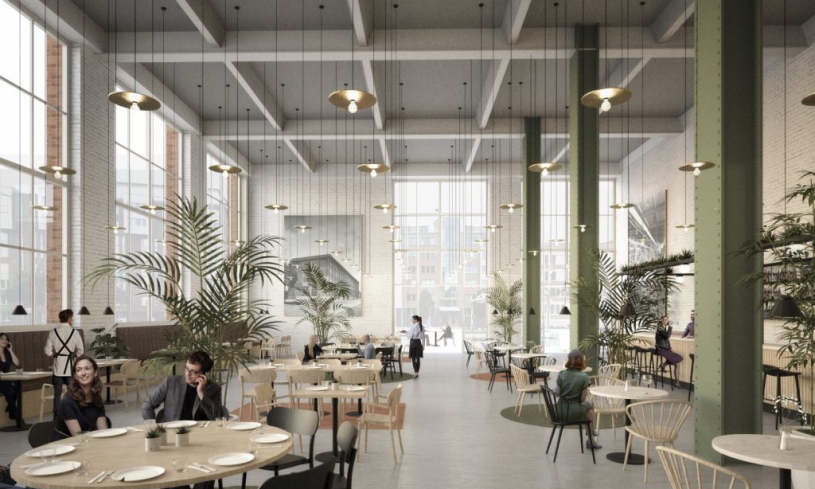
Nyfosa’s proposal establishes both new buildings as well as the conversion of existing buildings. A vital aspect for this project is to promote and protect the culturally and historically valuable buildings. New and old workshops and other activities are to function side by side. New routes, destinations and meeting places link southern Kopparlunden with Kopparlundsvägen and other parts of Kopparlunden.
The block between the Emaus workshop (Verkstaden 7) and the Arvid workshop (Verkstaden 8), which currently contains outdoor parking spaces, is proposed to become a city block with housing and services on the ground floors. The neighborhood is designed in such a way that the strong connection between the Emaus and Arvid Workshops is esthetically preserved in terms of design. Additional architecture should relate to, but not copy, the original buildings in terms of style, materiality and details. The neighborhood consists of two parts, the western and eastern blocks. The square between the two block sections is designed to preserve the connection between the Arvid and Emaus Workshops, and to facilitate movement through the block. The two block sections can be accessed via a number of entrances and a portico. Larger trees can be planted in the square. In addition to housing, the western block is proposed to include a possibility for shops, cafes, showrooms and more in the ground floor. The eastern block is will contain other facilities and services with the possibility of incorporating non-permanent housing.
The ambition in the detailed planning proposal for the Verkstaden 8 property is that the Arvid workshop will be restored to its original appearance in conjunction with the addition of an extension. New additions will be designed based on the materials, proportions and rhythm of the original building. The quality of the design, materials, details and aging aspects must be comparable to the original building at the time of its construction. The future version of the Arvid Workshop, offices, coworking areas and city-wide functions such as restaurants, service and shops will be made possible. It is meant to become the new landmark as the entrance building when coming from the south towards Kopparlunden.
Sustainability
Kopparlunden originated in the industrialization of the late 19th century. Then the Allmänna Svenska Elektriska Aktiebolaget, ASEA, and Nordiska Metallaktiebolaget established themselves in the area. The expansion of the industry started quickly and during the 20th century’s first decades, a large number of buildings were built. Already in 1899 in Kopparlunden is interesting from a historical and social/cultural perspective as it is a representative example of the industrial establishment in Västerås. The proposal focuses on the meeting between historical and contemporary buildings- This is made clear through thought-out building details, facades, street spaces and by making use of many existing elements that are reused. New public spaces and easy connections are developed that originate from the cultural-historical settlement.
The neighborhood is complemented with housing, reinforcing the need for other functions and activities in the area. Several porticas strengthen the neighborhood’s connection to surrounding areas and streets. The western block contains housing with services. Kopparlunden will become an attractive neighborhood that is bursting with life. The public places should be accessible and accommodate people of different ages. The proposal gives the area a mix of functions that results in lively and dynamic public spaces throughout the day and week. This in turn leads to increased security in the area. Public spaces within the area are within sight of residential buildings, lively ground floors and entrances. This results in a high degree of informal control, i.e. eyes on the street. Together with a clear network of streets, passages, streets and squares that minimize the number of building back sides, good conditions are created a safe and vibrant urban environment.
Additional buildings in the area are placed in such a way that blocks and courtyards are created. These yards will be a perfect outdoor environment for children to play in. Two important routes run in the north-south direction through the plan area. The west focuses on culture and events, while the east focuses on greenery and parks. A park route connecting Kopparlunden passes through the eastern part of the area. A direct connection to the northern part of the plan area, in an adjacent detailed plan, creates a park with a square and greenery. The park continues east into the plan area in the north.
The park turns into a square, Sintertorget, at the level of Sintervägen. South of this square, the space becomes narrower and in the center creates space for rainbeds. Here is space for smaller public spaces with benches. The rainbeds contribute to the greenery of the area and by separating them a little from the general pedestrian flow, they will require less maintenance.
By preserving and transforming existing buildings within the planning area, natural resources in the form of raw materials and materials are saved. In this way, new uses can be created without using large amounts of virgin material.
Map
Want to know more about the project?
Feel free to contact one of the project's contact persons
